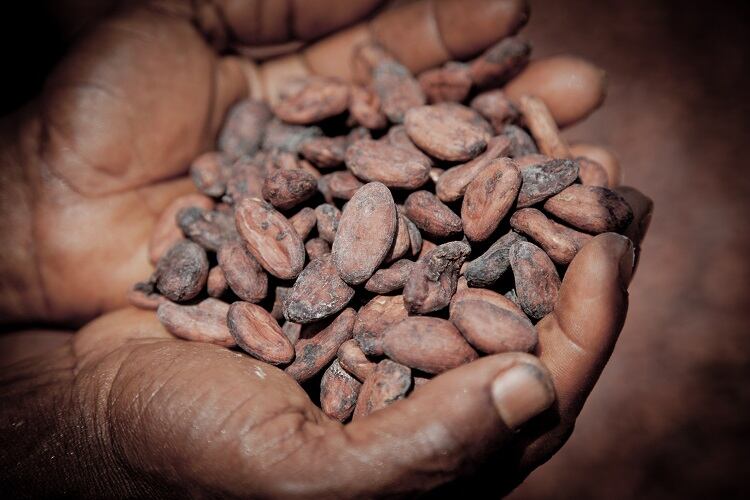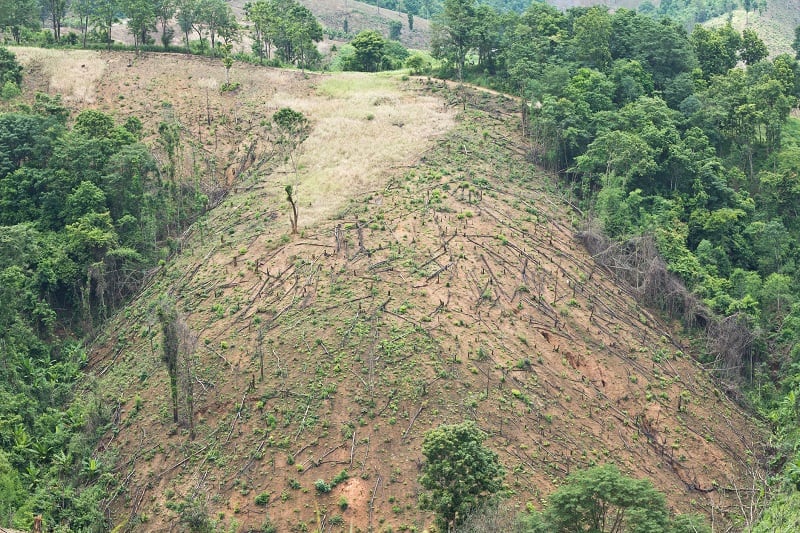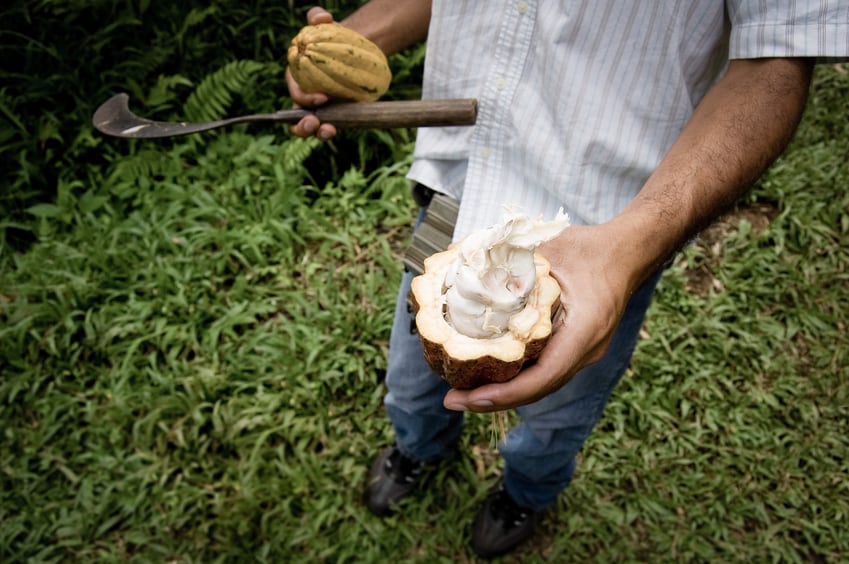Deforestation, child labour, and world market prices are just some of the sustainability issues facing the cocoa sector.
One way for brands to encourage sustainable farming practices, while promoting their commitments to sustainability-minded consumers, is to seek third-party certification. Conventional examples of certification bodies include Rainforest Alliance and Fairtrade.
However, data from Lumina Intelligence – a research provider owned by the same publisher as FoodNavigator – suggests that brands with conventional claims struggle to generate consumer engagement.
Further, sustainability interventions designed to address deforestation and child labour focus on the ‘organised’ cocoa sector through farmers typically part of cooperatives and farmer groups.
As a result, the ‘disorganised’ cocoa sector, which accounts for the bulk of deforestation and child labour, misses out on the sustainability initiatives it needs most.
Is there a way for brands to generate consumer engagement while bringing finance and extension services to these independent farmers and their communities?
Origin claims generate a higher retail price and consumer satisfaction
Lumina sustainability market analyst Oliver Nieburg suggests industry can leverage its strongest assets: marketing.
Where conventional sustainability claims struggle to engage consumers online, origin claims tell a different story, he said at FiE in Paris last week.
Lumina analysed product information, including sustainability claims, for more than 1,000 chocolate countlines and tablets across 20 countries.
The research provider also captured customer reviews and star ratings from five online retailers per country to determine if sustainable claims were generating engagement.
Data revealed that just one-quarter of chocolate products made a sustainability claim, with 13% making a third-party certification claim.
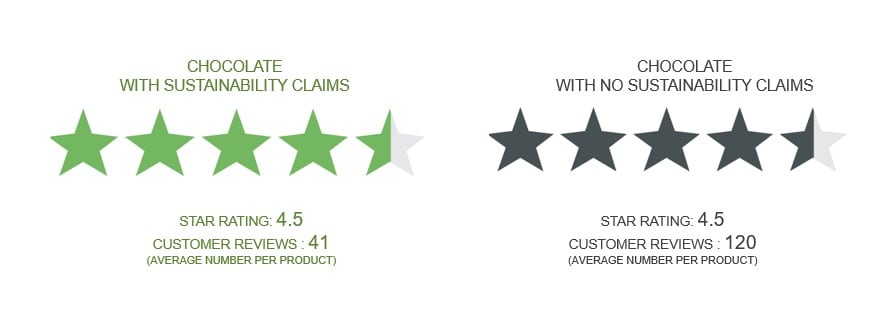
Chocolate making sustainability claims attract an equivalent star rating compared to products without claims, but have far fewer reviews and lower social media follows (Facebook and Twitter).
Such claims are still ‘niche’ in attracting customer engagement, said Nieburg.
While more research is needed, the analyst suggested that brands ‘shouting’ about their current achievements, such as ‘we’ve planted one million trees’, or ‘we source fair trade cocoa’, is not proving an effective strategy. It may be that sustainable sourcing has become an expectation in consumers’ eyes, Nieburg continued.
This is not the case with origin claims. Chocolate with origin claims generated a higher retail price than chocolate with sustainability claims, as well as a higher consumer satisfaction score.
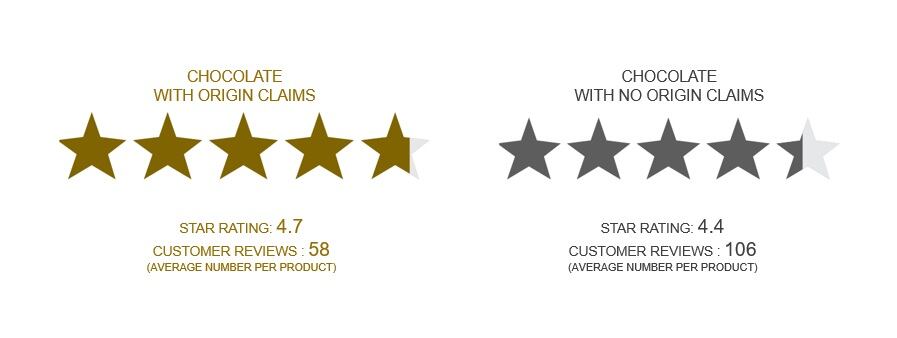
Yet, cocoa origin claims are present on just 12% of the bestselling chocolate countlines and tablets online and mostly indicate an entire country to suggest quality.
Such claims are more commonly for fine flavour origins in Latin America, said Nieburg, such as Ecuador or Peru.
Cocoa from these regions, sold under origin claims, is usually sourced from company programmes or certified cooperatives.
Independent cocoa growers, who do not subscribe to a cooperative or farming group, are therefore excluded from any benefits offered through certification and company-related sustainability initiatives.
Nieburg said there is ‘very little’ financing or added benefits, such as good agricultural practice training, that reach the disorganised sector “because we really don’t know who these people are”.
The ‘provincial origin claim’ potential
But mission-led brands can shake things up in cocoa – particularly in the disorganised sector.
By promoting a cocoa province where farmers are not part of a cooperative, brands can encourage consumers to contribute to sustainability efforts in regions that need it most, suggest Lumina.
Potential heritage provinces in deprived regions could include Kumasi in Ghana, Amazonas in Peru, or San Pedro in Côte d’Ivoire, said Nieburg.
“Darjeeling and Assam are already associated with certain styles of tea, but we don’t have the same association for cocoa provinces in chocolate. There are many possibilities.
“Imagine a climate-smart chocolate brand using beans from Volta, Ghana, where companies work with disorganised farmers on climate change adaption, or an elephant-friendly chocolate in Kakum, Ghana, that supports buffer zones around protected forests to conserve endangered species.” - Oliver Nieburg, sustainability market analyst Lumina Intelligence
Very few chocolate products make provincial origin claims on pack. Indeed, just 1% of products making origin claims reference a specific province.
However, Nieburg has observed a growing trend within boutique chocolate brands. “It is something that is creeping up with some of the smaller, premium companies – they are the early adopters,” he said.
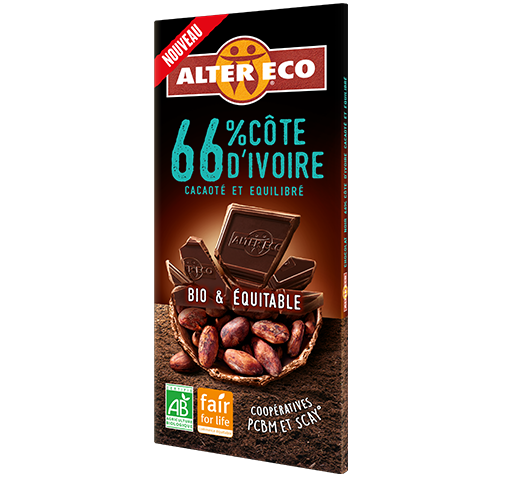
One such brand is France-based Alter Eco, which makes a country claim front-of-pack such as Cote d’Ivoire or Peru, as well as indicating the cooperative it is working with. On its website, the brand highlights its initiatives designed to combat deforestation in the sector.
Engaging the Millennial consumer
“There is a stronger story to tell by addressing the disorganised sector,” argued Nieburg, adding that companies indirectly buying cocoa in the disorganised sector also have a role to play.
These businesses can encourage consumers – and in particular younger consumers – to help them address supply chain complexities by bringing them ‘along on the journey’ to sustainability.
Such companies could use on-pack QR codes to donate to a community led-sustainability fund co-managed by participating farmers, local government and industry, the analyst suggested.
In that way, not only is the Millennial consumer invited to support a mission that helps make the ‘hardest hit’ cocoa communities more prosperous, but communities can determine their own futures, he continued, and “decide, for example, that money is best spent funding housing for teachers to address a teacher shortage in the area”.


